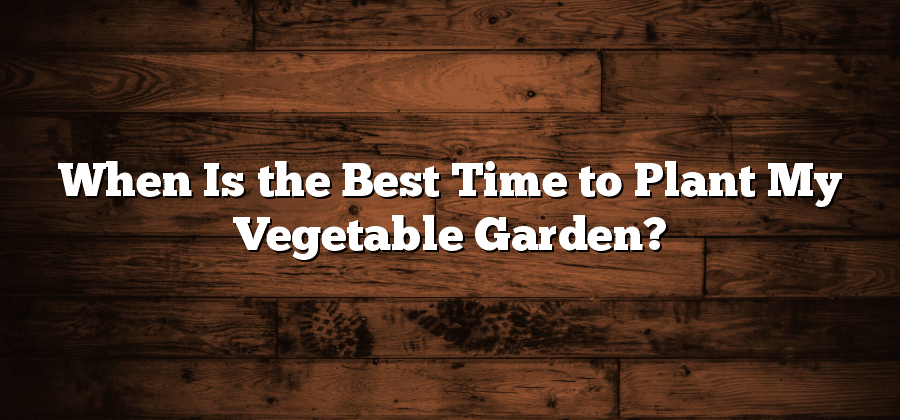Understanding Your Local Climate
Understanding Your Local Climate is essential for successful gardening. The climate in your area plays a significant role in determining what types of plants will thrive. Factors such as temperature range, rainfall patterns, and length of growing seasons can greatly impact the success of your garden. By gaining a thorough understanding of your local climate, you can make informed decisions about which plants to grow and when to plant them.
One of the key aspects of understanding your local climate is researching the average temperatures throughout the year. Temperature range is a critical factor in determining the suitable plants for your garden. Some plants prefer hot and humid climates, while others thrive in cooler temperatures. By knowing the average high and low temperatures in your area, you can select plants that are well-suited to your climate. Additionally, understanding the fluctuations in temperature can help you plan for sudden shifts that may impact your plants’ growth and productivity.
Researching the Ideal Growing Season
Before embarking on your vegetable gardening journey, it’s crucial to research and understand the ideal growing season in your local area. The growing season refers to the period of time when the weather conditions are favorable for plant growth and development. By knowing the optimal growing season, you can maximize your chances of a successful harvest and ensure the best possible yields.
One key aspect to consider when researching the ideal growing season is the average annual temperature in your region. Different vegetables have specific temperature preferences for germination and growth. For example, warm-season crops like tomatoes and peppers thrive in temperatures above 60°F (15°C), while cool-season crops such as lettuce and spinach prefer temperatures between 45°F (7°C) and 75°F (24°C). Understanding these temperature requirements will help you select the right vegetables to grow and time your planting accordingly.
Analyzing Soil Temperature and Moisture
Determining the ideal conditions for soil temperature and moisture is crucial when planning your vegetable garden. This information is essential in ensuring the successful growth and development of your plants.
Soil temperature plays a significant role in seed germination and root growth. Different vegetables have varying temperature requirements for optimal growth, and understanding these specific needs is key. Conducting a soil temperature test using a soil thermometer can provide valuable insights into the temperature of your soil at various depths. This will help you determine when the soil has reached the desired temperature for planting. Additionally, monitoring soil moisture levels is essential for maintaining healthy plant growth. Proper moisture availability promotes nutrient uptake and facilitates the transportation of water and minerals throughout the plant. Regularly checking the moisture levels in your soil will ensure that your plants get the appropriate amount of water, preventing both under and over watering issues.
Considering Frost Dates and Frost-Free Periods
Frost dates and frost-free periods play a crucial role in determining the success of your vegetable garden. Understanding these dates and periods is essential for planning and strategizing your planting schedule. When it comes to frost dates, it is important to know the average first and last frost dates in your local area. This information will give you a starting point for determining when it is safe to plant your vegetables. Planting too early can result in frost damage to tender plants, while planting too late may mean a shorter growing season for your crops.
The length of the frost-free period is equally important to consider. This period is the span of time between the last spring frost and the first fall frost, during which the risk of frost damage is minimal. It provides the optimal conditions for establishing and nurturing your vegetable plants. Longer frost-free periods allow for a wider variety of vegetables to be grown, as they require a longer growing season. However, even with a shorter frost-free period, it is still possible to cultivate a successful vegetable garden by selecting vegetables that have shorter maturation times or can withstand cooler temperatures.
Evaluating Specific Vegetable Planting Requirements
To successfully grow vegetables in your garden, it is essential to evaluate their specific planting requirements. Each vegetable has unique needs that must be met for optimal growth and yield. Understanding these requirements will not only help you plan and prepare your garden but also maximize the chances of a successful harvest.
Firstly, consider the ideal growing conditions for each vegetable. Some vegetables prefer full sun exposure, while others thrive in partial shade. Take note of the recommended number of hours of sunlight required for each plant and choose a suitable location in your garden accordingly. Additionally, assess the type and quality of soil needed for specific vegetables. Some crops prosper in well-drained soil, while others prefer a more moisture-retaining composition. Conduct a soil test to determine its pH level and nutrient content, ensuring you can adjust it if necessary to cater to the needs of your chosen vegetables.
Next, take into account the timing of planting for each vegetable. Some plants are more cold-tolerant and can be sown early in the spring, while others are more sensitive to frost and should not be planted until the danger of freezing has passed. Understanding the average frost dates in your region will help you time your planting accordingly, ensuring that your crops are not exposed to frost damage. Additionally, consider the length of the frost-free period in your area. This will determine the planting window for heat-loving vegetables, allowing you to leverage the longest possible growing season.
By evaluating and addressing the specific planting requirements of your vegetables, you can create the ideal growing conditions for each crop. This attention to detail will increase the likelihood of a flourishing garden and a bountiful harvest. So take the time to research and understand the needs of your chosen vegetables, and get ready to enjoy the rewards of your efforts in the form of fresh, homegrown produce.






